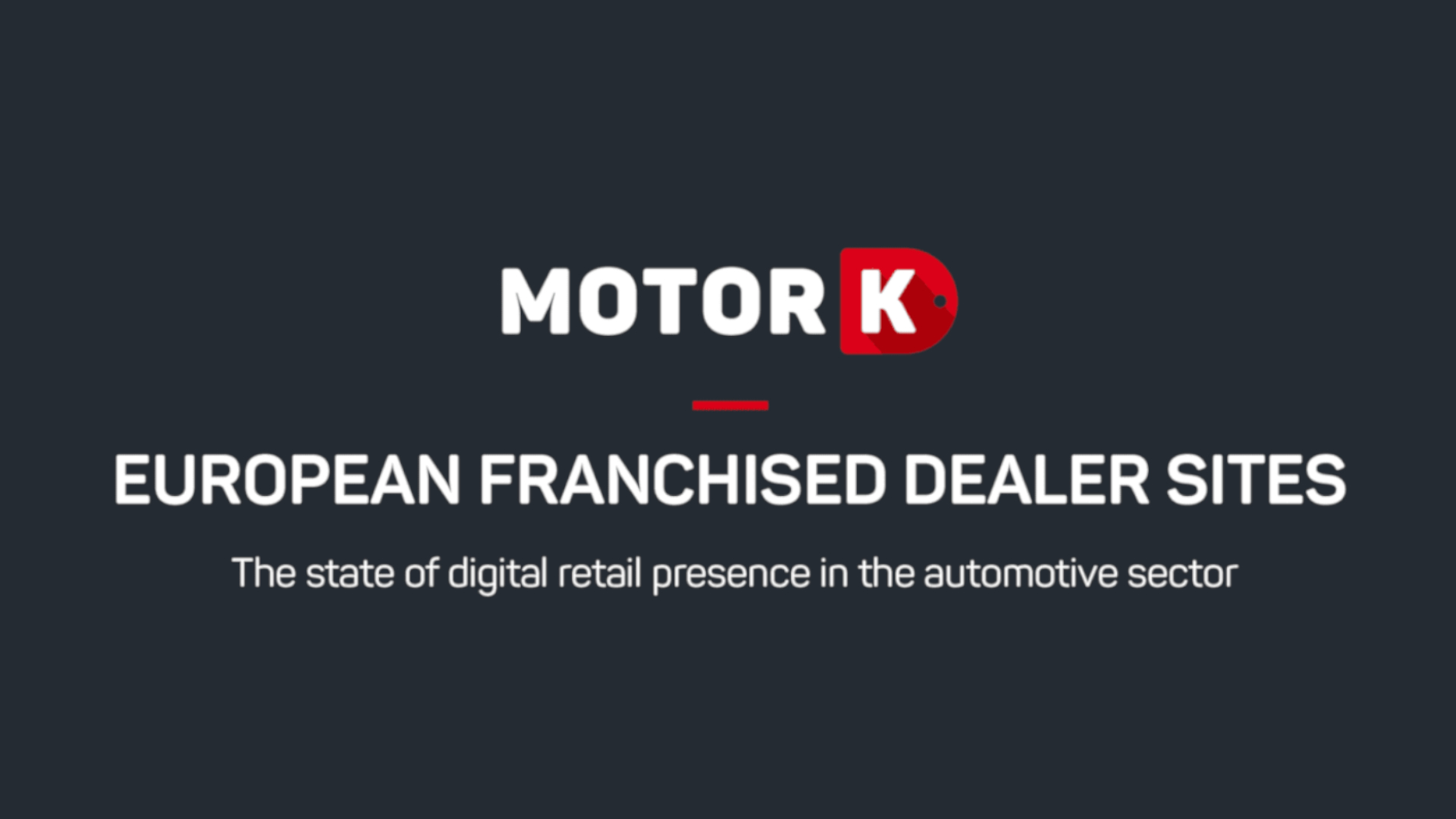More than half (56%) of European franchised dealer sites still lack basic functionalities for a modern website, falling short when it comes to the expectations of the modern car buyer. For instance, 54% of sites don’t list new or nearly new cars in stock, while tools like financial calculators, loan simulators and trade-in valuation are largely absent (86%). Real-time financial offers and trade-in valuation remain a long way off for all but a few sites.
These are some of the data emerging from “European Franchised Dealer Sites: The State of Digital Retail Presence”, the latest study conducted by MotorK – the company that is disrupting the entire European automotive distribution industry.
MotorK’s research department conducted an in-depth study of franchised dealer websites in the five major European markets: Germany, France, Italy, Spain and the UK. The company looked at 36 brands and more than 20 site features and functionalities for each brand. Altogether, the company analysed more than 3,000 data points.
For starters, no single brand stands out across markets and no market as a whole stands clearly above the others. Indeed, no single brand’s authorised dealer sites came close to a perfect score. In general, franchised dealer sites do a good job of certain basic functions, such as providing detailed product information and helping potential customers locate the dealership or request a test drive. They also do a reasonable job of informing visitors of new car promotions and current used car stock.
Given the complexity and significance of purchasing a car, dealers would be expected to make it easy for customers to reach out. While click-to-call capability is present on most mobile sites, 25% of them lack an easy-to-use contact page and online chat functionality was present on fewer than 5% of all the sites we studied. Even when it comes to test drive booking forms there is room for improvement: 22% of dealers lack this crucial functionality.
Even worse, most franchised dealers scored poorly on generally accepted site basics like Search Engine Optimisation and download speed – fundamental activities that any commercial site should master.
Focus on mobile
Many franchised dealer sites seem to be on the whole little more than pale copies of the branded sites with a dealer locator page thrown in. For consumers used to conducting large parts of their lives online – from shopping to investing to paying taxes – the automotive shopping experience still has a long way to go. This is even more true if we look at the performances recorded by the mobile versions of the sites: 89% of them aren’t optimised for mobile performance (they don’t have a responsive design). And yet, we already know that 62% of automotive purchase researches in Europe begin with a smartphone and, above all, that in three years, according to a recent MotorK study, 86% of researches of a new car will start from a mobile or IoT device and 91% of purchase processes will include at least one step from a mobile device, maybe through social networks. Yet 45% of franchised dealer sites lack social media links or sharing options.
«Dealer websites are a crucial – and often overlooked – part of the contemporary customer journey. While the main brand sites get most of the attention, buyers in all segments rely heavily on dealer websites as part of their research process. According to Google, around half of all car buyers located their dealer from the dealer’s own website, double the number that did so on the parent brand’s site. In some countries, car buyers rank dealer sites above the brand’s own site in terms of importance to their shopping decision» – Brian Coleman, MotorK’s Chief Strategy Officer, stated.
Methodology:
MotorK tested the dealers’ web presence by benchmarking the key elements that we believe are necessary to offer prospective car buyers a satisfactory shopping experience. The company grouped these into three broad categories in line with key stages of the customer journey: Awareness, Research and Engagement.
Awareness criteria measure how well the site is optimised for Search, how it performs from a technical perspective (i.e. download times) and whether it is consistent with the parent brand’s corporate identity.
Research criteria measure the availability of features and tools that help a prospective customer learn about the vehicles, check for promotions and stock availability, and finally determine if he or she can afford to buy.
Engagement criteria measure how easy it is for a car shopper to get in touch with a dealer, either by locating the physical dealership or communicating through other means, such as chat, social media or click-to-call.








